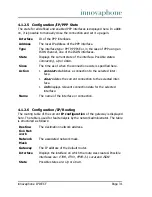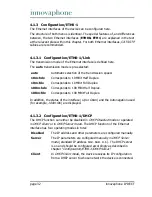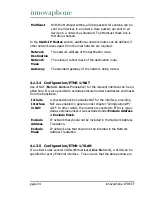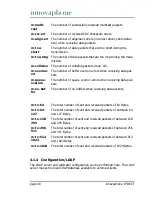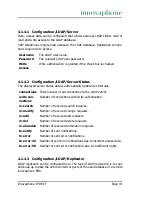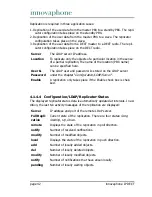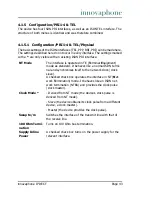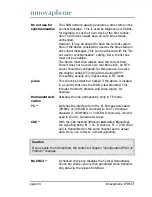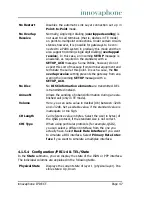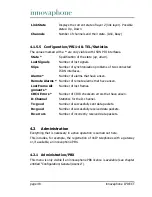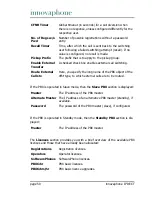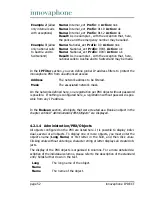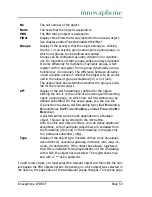
innovaphone IP DECT
Page 45
4.1.5.2 Configuration/PRI1-4 & TEL/Protocol
In the
Protocol
submenu, you can set the protocol to be used for the ISDN in-
terfaces. From the six available protocols, select the one that is best suited to
your environment:
Euro ISDN D-channel protocol:
QSIG D-channel protocol:
This is a standardised signalling method that is mainly used to connect PBXs.
Here,
basic call
and
tunnelling
are supported by the gateways. This allows, in
particular, homogeneous PBX systems to be linked with QSIG (1 byte), in which
manufacturer-specific properties are exchanged via QSIG.
Unfortunately, there are several variants of the QSIG standard and various im-
plementations; some conform more and some less to the standard.
The gateways therefore support two different variants.
Relay Off *
Disables the relay function or closes the relay of the
power-off loop
.
Loopback *
A checked check box enables the loopback function. This
is only necessary for test purposes. The loopback
function simulates a connected device on the relevant
interface.
Txlevel for T1
mode *
Allows the signal volume for T1 mode to be adjusted in
decibel. The signal in T1 mode may be increased by
0db
,
7.5db
or
15db
.
Send flags on
FDL *
A checked check box transmits FDL messages (
F
acility
D
ata
L
ink). Concerns T1 mode.
EDSS1
This type of signalling has gained worldwide acceptance
for ISDN subscribers and, despite the name, is also com-
mon outside Europe.
QSIG ECMA1
Numbering of the channels from 1-30 (2 bytes)
QSIG ECMA2
Numbering of the channels from 1-15, 17-21 (2 bytes)

